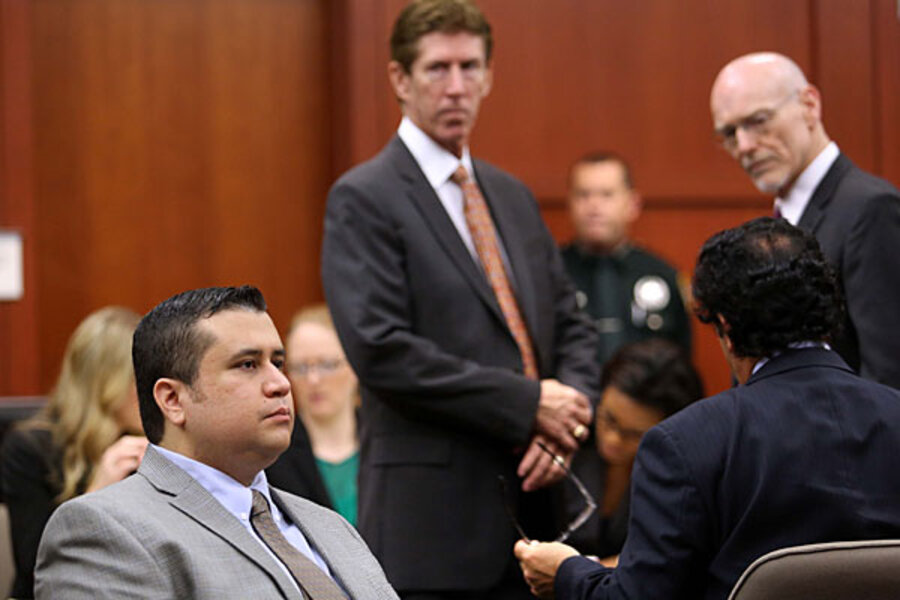George Zimmerman trial: Second Amendment bubbles beneath jury selection
Loading...
| Atlanta
The George Zimmerman murder trial has long been seen as a barometer for America’s views on race. But some legal experts say the verdict could say much more about a different national conversation: How America sees the evolving role of guns in society.
Certainly race is an issue in the case – and a big one. As jury selection continues for an eighth day in Sanford, Fla., some jurors have said they fear civil unrest, and even personal danger, should Mr. Zimmerman be found not guilty of murdering Trayvon Martin, an unarmed black teenager.
But while inequities and racism remain, the nation is moving toward greater integration and racial understanding, says Doug Keene, a jury expert in Austin, Texas, who blogs on “The Jury Room.” Gun rights, however, remain highly contentious, with no indication that Americans are moving toward any consensus.
Indeed, the Zimmerman trial comes as America is conflicted over gun policy after last year’s mass killings in Aurora, Colo., and Newtown, Conn. Given that the trial could turn on the question of whether the defendant used his gun in a responsible – if deadly – manner, it could play an important role in influencing the national debate.
“The public conversation about race tilts toward a more enlightened attitude about civil rights, but the conversation about guns is extremely conflicted, regional, socioeconomic, and divided in every conceivable way,” says Mr. Keene. “This year, for all the tragic reasons we’re aware of, gun policy has become a constant presence … in our neighborhood conversations, and the lack of agreement on correct policy about guns is going to be one of the legacies of this trial.”
Circuit Court Judge Debra Nelson announced Wednesday that lawyers in the Zimmerman case have winnowed down 500 potential jurors to 24 women and 16 men – a pool of 40 that includes 27 whites, seven blacks, three Hispanics, and three potential jurors who claim they are racially mixed. The final jury will include six members and four alternates.
Prosecutors have sought to include at least a few black members, who might be sympathetic to Trayvon’s situation. Zimmerman has acknowledged shooting the 17-year-old Trayvon on Feb. 26, 2012, in Sanford, but contends he acted in self-defense. Prosecutors allege that Zimmerman followed Trayvon on foot against a 911 dispatcher’s order and murdered him.
But opinions about guns have percolated through the jury selection process, too.
Juror E73, a woman who was called back Wednesday, told the court that, “I could never own a gun and could not conceive of being armed,” while Juror H7, an older white man with a raspy voice, faulted what he called bias in the media against firearms.
Nationally, a shift toward increasing gun rights for law-abiding Americans began with the passage in 1994 of the federal assault weapons ban, which sparked a political and cultural backlash among gun supporters that is still resonating today. Since that ban expired in 2004, no major anti-gun legislation has been passed at the federal level. Meanwhile, gun control laws passed by some states, primarily in the north, have been overwhelmed in number by pro-gun-rights laws passed by other states, primarily in the South.
The Zimmerman trial will put those attitudes to the test.
“The defense would like jurors who have been victims … who are gun advocates, who believe in being proactive, and who will have some sympathy for Zimmerman’s claim of self-defense,” said Jeffrey Abramson, a professor at the University of Texas School of Law, in a recent Monitor interview.
The demographics of the jury could be telling.
“Jurors are going to be older, which tends to mean more conservative with respect to attitudes about race, while women tend to be less open-minded about carrying guns, so those two dynamics may offset each other,” says Keene.






